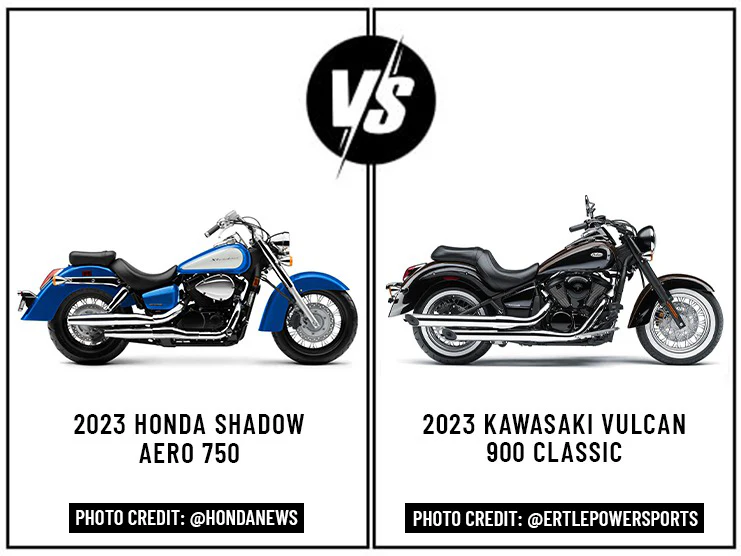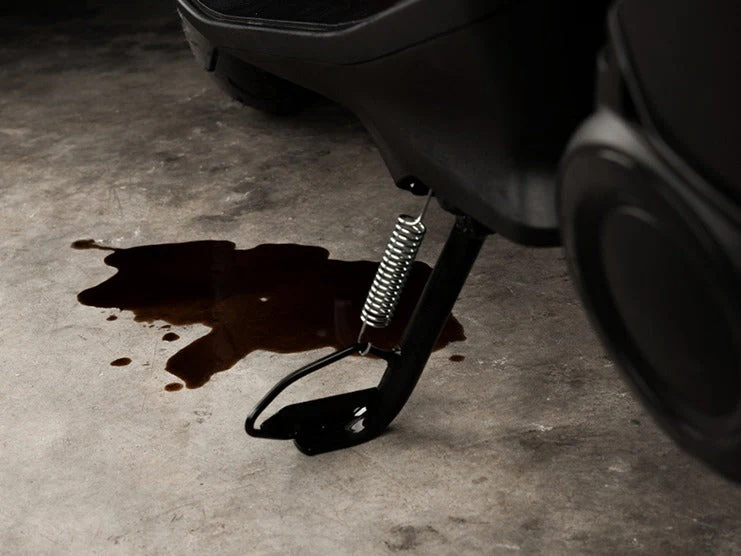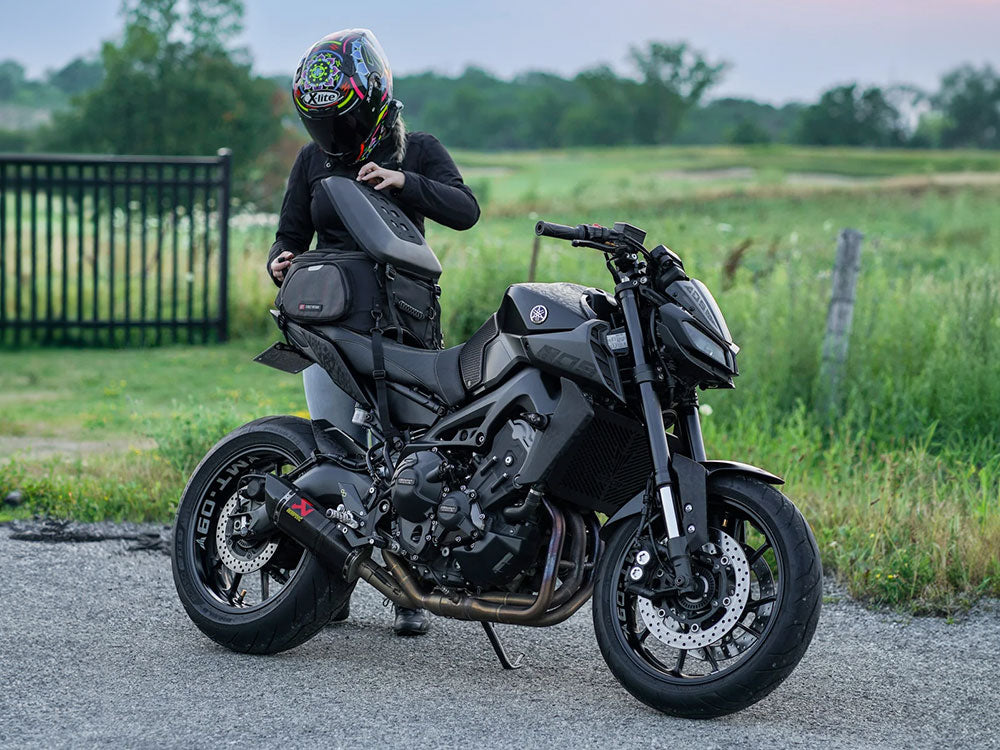Table of Content
1. Honda Shadow Aero 750 Vs. Kawasaki Vulcan 900 Classic


Honda and Kawasaki are two of the most reliable Japanese motorcycle brands, having produced high-quality and durable motorcycles for decades. However, Honda is considered to be a more reliable brand, producing a wide range of long-lasting motorcycles. Both motorcycle brands are popular for their high-speed sports bikes and sturdy dirt bikes. However, both motorcycle brands have only produced a few cruiser models.
Honda’s most popular cruiser lineup, the Honda Shadow, was introduced in 1983 and is still currently in production. Currently, Honda only produces smaller cruisers with 750 cc engines. Meanwhile, the Kawasaki Vulcan series is the only cruiser lineup that is still being produced.
The Honda Shadow Aero 750 and the Kawasaki Vulcan 900 Classic are two old-school cruisers with ideal cruiser designs and ergonomics. Both motorcycles have relaxed riding positions and styles that draw inspiration from the 1970s vintage cruisers. Both motorcycles are entry-level cruisers with good handling and stability. This article is a detailed comparison between the Honda Shadow Aero 750 and the Kawasaki Vulcan 900 Classic.
2. Detailed Specs Comparison: Honda Shadow Aero 750 Vs. Kawasaki Vulcan 900 Classic
| 2023 Honda Shadow Aero 750 | 2023 Kawasaki Vulcan 900 Classic | |
|---|---|---|
| Identification | ||
| Honda | Maker | Kawasaki |
| Shadow | Series | Vulcan |
| Aero | Model | 900 Classic |
| 2023 | Year Model | 2023 |
| Cruiser | Motorcycle Type | Cruiser |
| VT750C | Model ID | VN900B |
| $7,799 | Base Price | $8,999 |
| Engine and Performance | ||
|---|---|---|
| 745 cc / 45.46 cu in | Displacement | 903 cc / 55.1 cu in |
| 52° V-Twin, Four-Stroke | Engine Design and Type | Four-Stroke, 55° V-Twin |
| Liquid-Cooled | Cooling System | Liquid-Cooled |
| Two | No. of Cylinders | Two |
| Three | Valves Per Cylinder | Four |
| 44.6 hp at 5,500 rpm | Horsepower | 50 hp |
| 64.94 Nm at 3,500 rpm | Torque | 78.9 Nm at 3,500 rpm |
| 76 mm | Stroke | 74.2 mm |
| 79 mm | Bore | 88 mm |
| Programmed Fuel Injection (PGM-FI); 34mm Throttle Body | Fuel Injection System | DFI 34 mm Throttle Bodies (2), with Sub-Throttle Valves |
| 9.6:1 | Compression Ratio | 9.5:1 |
| Wide-Ratio, Five-Speed | Transmission | Five-Speed with Positive Neutral Finder |
| Shaft | Final Drive | Kevlar-Reinforced Belt |
| Wet Multiplate | Clutch | Wet multi-Disc |
| 56 mpg | Fuel Economy | N/A |
| Chrome, Separate Dual Mufflers | Muffler | Chrome, Separate Dual Slash-Cut Mufflers |
| Two-Into-Two Exhaust | Exhaust | Two-Into-Two Exhaust |
| Double-Cradle Steel Frame | Frame | Semi-Double Cradle, High-Tensile Steel |
| Electric | Starter | Electric |
| Fuel Tank-Mounted | Gauges | Fuel Tank-Mounted |
| Wheels | ||
|---|---|---|
| Wire-Spoked | Wheels | Wire-Spoked |
| Front: 120/90-17 Rear: 160/80-15 | Tires | Front: 130/90-16 Rear: 180/70-15 |
| Braking | ||
|---|---|---|
| 296 mm Single disc Brake with Twin-Piston Caliper | Front | 300 mm Single Hydraulic Disc |
| 180 mm Drum | Rear | 270mm Single Hydraulic Disc |
| 2023 Honda Shadow Aero 750: N/A 2022 Honda Shadow Aero 750: Optional | ABS | N/A |
| Suspension | ||
|---|---|---|
| 41 mm Telescopic Fork | Front | 41 mm Showa Telescopic Fork |
| Dual Shocks with Five-Position Spring-Preload Adjustability | Rear | Uni-Trak® Swingarm, Seven-Way Adjustable Spring Preload |
| 4.6 in | Front Wheel Travel | 5.9 in |
| 3.5 in | Rear Wheel Travel | 4.1 in |
| Dimensions and Weight | ||
|---|---|---|
| 6.3 in | Trail | 6.3 in |
| 34° | Rake | 32° |
| 3.7 gal | Fuel Tank Capacity | 5.3 gal |
| 130 mm / 5.1 in | Ground Clearance | 134.62 mm / 5.3 in |
| 919 mm / 36.2 in | Width | 1005.84 mm / 39.6 in |
| 1125 mm / 44.3 in | Height | 1064.26 mm / 41.9 in |
| 2459 mm / 96.8 in | Length | 2463.8 mm / 97.0 in |
| 25.9 in | Seat Height | 26.8 in |
| 64.5 in | Wheelbase | 64.8 in |
| 560 lbs | Wet Weight | 619.6 lbs |
3. Design: Honda Shadow Aero 750 Vs. Kawasaki Vulcan 900 Classic
3.1 Design: Honda Shadow Aero 750
The Honda Shadow Aero 750 has a vintage cruiser design with chrome and blacked-out finishes. It has a planted design to ensure a low seat height and a low center of gravity for stable and comfortable rides. The Honda Shadow Aero 750 has a classic round headlamp fitted inside a chrome nacelle and a raked-out front end providing a chopper-style look and a long wheelbase of 64.5 inches. It is fitted with wide, swept-back buckhorn handlebars with round, chrome side mirrors. The chrome gauge cluster is mounted to a peanut-shaped fuel tank with a capacity of 3.7 gal. The Honda Shadow Aero 750 also comes with a comfortable two-piece saddle capable of two-up riding. The V-Twin engine has a blacked-out finish with a chrome teardrop-shaped air filter cover and chrome separate dual shorter exhaust pipes. The Honda Shadow Aero 750 also has touring-style chopped front and rear fenders with classic diamond-shaped tail/stop light and bullet-shaped turn signals. A black liquid-cooled radiator is fitted in front of the engine. The Honda Shadow Aero 750 also comes with wire-spoked wheels that enhance the classic cruiser look.
3.2 Design: Kawasaki Vulcan 900 Classic
The Kawasaki Vulcan 900 Classic is a modern motorcycle with an old cruiser look. It has a mostly blacked-out finish, except for the chrome separate dual slash-cut mufflers, wide swept-back handlebars, and side mirrors. The Kawasaki Vulcan 900 Classic has a large round headlamp with a blacked-out nacelle. It has a black, slightly raked-out front fork with a longer wheelbase of 64.8 inches. The Kawasaki Vulcan 900 Classic is bigger and bulkier than the Honda Shadow Aero 750, with a wet weight of 619.6 lbs. It has a blacked-out gauges cluster mounted to a teardrop-shaped fuel tank with a capacity of 5.3 gal. The Kawasaki Vulcan 900 Classic also has an average-sized chopped front fender and a large, chopped rear fender with a classic bulging tail/stop light and bullet-shaped turn signals. It is fitted with a comfortable single-piece saddle capable of two-up riding and wire-spoked wheels to enhance its old-school look.
4. Engine and Performance: Honda Shadow Aero 750 Vs. Kawasaki Vulcan 900 Classic
4.1 Engine and Performance: Honda Shadow Aero 750

The Honda Shadow Aero 750 is a beginner-friendly cruiser powered by a 745 cc liquid-cooled, 52° V-Twin, four-stroke engine capable of a horsepower of 44.6 hp at 5,500 rpm and a torque of 64.94 Nm at 3,500 rpm. It is not a fast motorcycle, but the 52° V-Twin produces adequate power suited for long weekend rides, daily commutes, and around-town cruising. The Honda Shadow Aero 750 has a wide-ratio, five-speed transmission that connects to the rear wheel via a cleaner and maintenance-free shaft drive. This old-style cruiser also comes with a Programmed Fuel Injection (PGM-FI) with a 34 mm throttle body to ensure a good throttle response, a fuel economy of 56 mpg, and hassle-free starts even in cold conditions.
The Honda Shadow Aero 750’s engine features a long-stroke design to ensure adequate low-end torque at a broad rpm range. The 41 mm telescopic front fork has an aluminum triple clamp and steel shrouds for controlled and neutral handling. The chrome-covered, preload-adjustable dual rear shock absorbers come with a five-piston spring for a smooth riding experience. The front fork has a wheel travel of 4.6 inches and the dual rear shocks have a wheel travel of 3.5 inches. The 2022 Honda Shadow Aero 750 ABS VT750CS comes with a 296 mm single disc, a 180 mm rear drum, and an optional ABS. However, Honda has not launched the ABS version for the 2023 Honda Shadow Aero 750 model yet.
Also Read: HONDA REBEL 1100 VS. HONDA SHADOW 750
4.2 Engine and Performance: Kawasaki Vulcan 900 Classic

The Kawasaki Vulcan 900 Classic is fitted with a 903 cc liquid-cooled, 55° V-Twin, four-stroke engine capable of a torque of 78.9 Nm at 3,500 rpm and a horsepower of 50 hp. It also has a five-speed gearbox that connects to the rear wheel via a cleaner and easily-maintained Kevlar-Reinforced belt drive. Despite its traditional cruiser design, it comes with several modern features. The Digital Fuel Injection (DFI) with 34 mm throttle bodies and sub-throttle valves ensures optimum performance, precise throttle response, and low fuel consumption. The fuel injectors produce a fine-quality mist that improves the combustion process and provides better acceleration. The 903 cc, 55° V-Twin engine is rubber-mounted with gear-driven balancers and single pin crankshaft design to reduce engine vibrations. Its stability and handling were improved by the large-diameter box-section backbone frame able to fit a large fuel tank.
The Kawasaki Vulcan 900 Classic has a triangular swingarm design to ensure a hard-tail look. However, it is fitted with a mono-shock absorber hidden under the seat for better stability and lightweight handling at low and high speeds. The longer wheelbase and 180 mm fat rear tire help improve stability and handling while maneuvering on straight roads or twists and turns. The Kawasaki Vulcan 900 classic also comes with a 300 mm single hydraulic disc and a 270 mm single rear hydraulic disc brake to provide reliable braking.
5. Comfort and Ergonomics: Honda Shadow Aero 750 Vs. Kawasaki Vulcan 900 Classic
5.1 Comfort and Ergonomics: Honda Shadow Aero 750

Having a traditional cruiser design, the Honda Shadow Aero 750 has ideal cruiser ergonomics with a low seat height of 25.9 inches, ensuring a low center of gravity and better stability. The longer wheelbase and the raked-out front end also provide better linear stability and performance on straight roads.
The Honda Shadow Aero 750 provides adequate legroom due to its forward-mounted foot controls. Its upright back position and adequate legroom make it suited for shorter and taller riders. The rider can comfortably reach the mid-mounted, swept-back buckhorn handlebars. With a few add-ons, including a windscreen, saddlebags, and backrests, it can become an ideal choice for long-distance rides.
5.2 Comfort and Ergonomics: Kawasaki Vulcan 900 Classic

The Kawasaki Vulcan 900 Classic also has a classic cruiser design with laid-back ergonomics suited for comfortable cruising on open roads and city travel. It also has a longer wheelbase and a planted design that improves stability and ensures a low center of gravity. The Kawasaki Vulcan 900 Classic has a seat height of 26.8 inches with a dip in the rider’s seat to provide lumbar support. To improve comfort, it also comes with forward-mounted floorboards that allow riders to comfortably rest their feet while cruising. The wide low-mounted, swept-back handlebars and forward-mounted floorboards ensure stretched riding position and relaxed ergonomics for comfortable and continuous long-distance rides. With a large fuel tank capacity of 5.3 gal, it is a better choice for long-distance rides and touring. However, for a better touring experience, the Kawasaki Vulcan 900 Classic can be fitted with a windscreen, saddlebags, and backrests.
6. Technology and Features: Honda Shadow Aero 750 Vs. Kawasaki Vulcan 900 Classic
| 2023 Honda Shadow Aero 750 | 2023 Kawasaki Vulcan 900 Classic | |
|---|---|---|
| Technology and Features | ||
| 2023 Honda Shadow Aero 750: No 2022 Honda Shadow Aero 750 (Optional) | ABS | No |
| No | Dual Throttle Valves | Yes |
| Yes | Speedometer | Yes |
| Yes | Odometer | Yes |
| No | Tachometer | No |
| No | Fuel Gauge | Yes |
| Yes | Trip meter | Yes |
| No | Clock | Yes |
| Yes | Fuel Indicator | Yes |
| Yes | Passenger Seat | Yes |
7. Pros and Cons: Honda Shadow Aero 750 Vs. Kawasaki Vulcan 900 Classic
7.1 Pros and Cons: Honda Shadow Aero 750
| Honda Shadow Aero 750 Pros | Honda Shadow Aero 750 Cons |
|---|---|
| Ideal cruiser design | Smaller fuel tank capacity |
| Comfortable ergonomics | Less powerful and torquey engine |
| Upright back position | Slower motorcycle |
| Adequate legroom | Faulty starter switch |
| Affordable | Petcock leakage |
| Reliable | Lacks sixth gear |
| Cheaper to maintain | No ABS |
| Traditional cruiser look | |
| Good fuel economy | |
| Beginner-friendly | |
| Comfortable for taller riders |
7.2 Pros and Cons: Kawasaki Vulcan 900 Classic
| Kawasaki Vulcan 900 Classic Pros | Kawasaki Vulcan 900 Classic Cons |
|---|---|
| Affordable | Heavy for shorter riders |
| Ideal cruiser design | Lacks sixth gear |
| Comfortable ergonomics | Produces less horsepower |
| Relaxed riding position | Noisy drive pulley |
| Stock forward-mounted floorboards | No ABS |
| Beginner-friendly | Whining engine noise |
| Good for taller and heavy riders | Clutch slips sometimes |
| Smooth riding experience | |
| Comfortable for long-distance rides | |
| Reliable | |
| Economical | |
| Good intermediate-level motorcycle | |
| Longer wheel travel | |
| Large fuel tank capacity |
8. Colors and Cost: Honda Shadow Aero 750 Vs. Kawasaki Vulcan 900 Classic

9. Frequently Asked Questions (FAQs)
9.1 Is the Kawasaki Vulcan 900 a Good Bike?
The Kawasaki Vulcan 900 is a well-rounded motorcycle with good handling and laid-back riding ergonomics. If you are looking for a reliable and affordable beginner-friendly or intermediate-level cruiser, then the Kawasaki Vulcan 900 is the ideal choice. The engine is capable of producing good low-end torque and adequate power for comfortable cruising and long-distance rides. The high-quality suspensions have longer wheel travels to ensure a smooth riding experience.
9.2 Is the Kawasaki Vulcan 900 a Heavy Motorcycle?
The Kawasaki Vulcan 900 is a heavy motorcycle with a wet weight of 619.6 lbs, making it slightly harder to handle at low speeds, especially for beginners. Even the stripped-down Kawasaki Vulcan 900 Custom model has a wet weight of 610.6 lbs which is not ideal for shorter or novice riders.
9.3 What are the Key Differences between the Honda Shadow Aero 750 and the Kawasaki Vulcan 900 Classic?
| Key Differences between the Honda Shadow Aero 750 and the Kawasaki Vulcan 900 Classic | |
|---|---|
| Honda Shadow Aero 750 | Kawasaki Vulcan 900 Classic |
| 745 cc / 45.46 cu in | 903 cc / 55.1 cu in |
| 52° V-Twin | 55° V-Twin |
| Three valves per cylinder | Four valves per cylinder |
| Shaft drive | Belt drive |
| Dual shock absorbers | Mono-shock absorber hidden under the seat |
| Reasonable front and rear wheel travels | Longer front and rear wheel travels |
| Small fuel tank capacity | Large fuel tank capacity |
| A low seat height of 25.9 inches | Seat height of 26.8 inches |
| Wet weight of 560 lbs | Wet weight of 619 lbs |
| Shorter separate dual exhaust pipes | Separate dual slash-cut exhaust pipes |
| Two-piece saddle with removable passenger seat | Single-piece saddle capable of two-up riding |
10. Which is Better: the Honda Shadow Aero 750 or the Kawasaki Vulcan 900 Classic?

The Honda Shadow Aero 750 and the Kawasaki Vulcan 900 are beginner-friendly cruisers with laid-back riding styles and comfortable ergonomics. Both motorcycles are ideal for cruising, city travel, long-distance weekend rides, and riding through traffic. Being slightly more expensive than the Honda Shadow Aero 750, the Kawasaki Vulcan 900 comes with a bigger engine, forward-mounted floorboards, and digital fuel injection (DFI) with dual throttle valves for better acceleration and fuel economy. Meanwhile, the Honda Shadow Aero 750 is an ideal beginner-friendly cruiser with a low seat height, low center of gravity, better handling, better stability, and good low-end torque. It also has a better aesthetic appeal than the Kawasaki Vulcan 900 Custom and is easily customizable with tons of aftermarket parts readily available. If you want a high-speed and stripped-down cruising experience, the Honda Shadow Aero 750 can be improved with better and smoother suspensions and lightweight wheels, while removing the heavyweight fenders.













Leave a comment
All comments are moderated before being published.
This site is protected by hCaptcha and the hCaptcha Privacy Policy and Terms of Service apply.